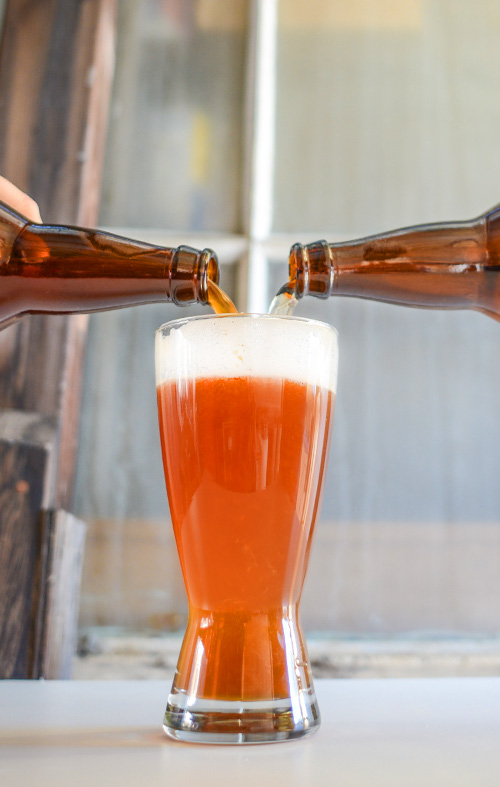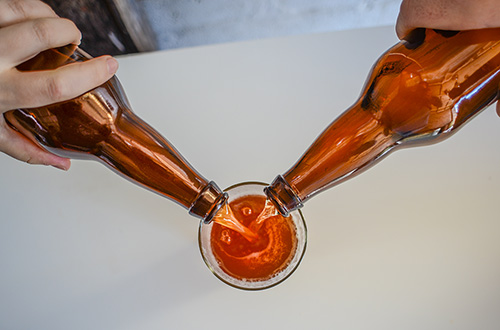
Blending is no simple task, but a worthwhile endeavor considering the possible outcomes. No matter what the initial reason is for pursuing a blend, the ultimate goal should always be to create a mixture of beer that is greater than its individual parts.
1. Tweaking to Style
If a competition-bound brew didn’t come out within the guidelines of the intended style, blending can be used to bring your entry back within the target parameters. Form a list of the ideal changes and then consider other homebrews that can be used to achieve the goals. When pursuing this strategy, be sure to keep detailed notes on the types of beers and proportions used to achieve the style. This information can be used to tweak the future recipe in hopes of avoiding style snafus.
2. Developing Complexity
Blending various batches of beer can create complexity that cannot otherwise be achieved by brewing a single batch. Combining different styles allows for unique results (see #4), but some of the most interesting complexity can be developed by blending various ages of the same recipe—particularly styles that lend themselves to cellaring like barley wines, lambics or imperial stouts.
Blending different aged quantities of the same brew allows for characteristics at different points in the aging process to be experienced at one time. Start setting aside some wort of your most frequently brewed recipes to experiment with the next time you make the same brew.
3. Establishing Consistency
Consistency is more of a concern for commercial breweries, but if you have regulars hounding you for your flagship pale ale they have come to know and love, than you best be able to produce the same beer over and over again.
Many commercial brewers will put aside a portion of each batch of one recipe for future blending. Subsequent batches are blended with the portion from the prior batch to create uniformity from one batch to the next. Take careful notes of the proportions you are using to keep the batches as consistent as possible.
4. Creating New Styles
Throughout history, styles have been created by combining different batches of beer—which means no additional brewing necessary. Some commercial breweries will collect the various runnings from one mash and combine them in different proportions to create different styles. For example, Fuller’s Brewery creates three or four different beers from just one mash. Different styles can also be blended to create unique homebrew.
If blending with a classic style in mind, use the BJCP style guidelines to help make decisions on what the blend should consist of. If you are trying to make something nontraditional, the sky’s the limit!
5. Salvaging a Doomed Brew
There really isn’t a magical way to transform a poor tasting beer into something sensational, but blending can help save something sentenced to the drain by dressing it up as a drinkable brew.
Identify the flaws in the brew and strategize the characteristics you need to offset or mask these imperfections. Find beers with these desirable characteristics and add one at a time to taste. In this scenario, don’t be discouraged if your final mixture is still imperfect. If you can drink it, consider it a success!

For more information on the intricacies of blending, pick up a copy of Brewing Better Beer by Gordon Strong and access a free download of Matt Brynildson’s (Firestone Walker Brewing Co.) 2007 National Homebrewers Conference seminar on blending.



Share Post